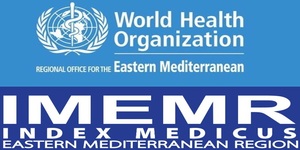Prevalence of Staphylococcus aureus in Atopic Dermatitis (Eczema) cases in Al- Najaf City/Iraq
DOI:
https://doi.org/10.36321/kjns.vi20162.2661Keywords:
Staphylococcus aureus, atopic dermatitis, SCORAD indexAbstract
Objectives: This study was planned to evaluate the prevalence of Staphylococcus aureus in cases of atopic dermatitis (AD) in Najaf city.
Methodology: A total of 100 skin swabs were obtained from the effected skin areas of patients who were attending to AL-Sader Teaching Hospital in AL-Najaf city during the period from May to October 2014.with (AD), along with 50 skin swabs that were obtained from a comparable skin area of 50 persons who were regarded as a control group and comparable in ages and genders with the patient group. All the skin swabs (patients and control) were then immediately streaked on the surface of selective media for isolation and identification of S. aureus preliminary. Then the suspected isolates were confirmed by specific biochemical and enzymatic confirmative tests. The incidence of Staphylococcal isolates was detected according to the age, gender, duration, severity and also according to the family history.
Results: From the 100 swab samples of patients, there were 54/100 (54%) showed positive isolation of S. aureus, while only 10/50 (20%) swab samples of the control group showed positive S. aureus isolation. The difference between the two groups was statistically significant (PË‚ 0.05). The prevalence of moderate AD cases was higher than that of mild and severe (55.56%> 20.37%Ë‚ 24.07%) respectively. Thirty seven patients (68.52%) were categorized with family history inheritance of AD (Results were statistically significant (PË‚ 0.05), with male to female ratio was 1.25:1. Seventeen patients (31.5%) were categorized as acute AD, while 37 patients (68.5%) were diagnosed as chronic.
Conclusions: Staphylococcus aureus infection is positively correlated with AD cases, and genetic factors may play an important role in increasing the frequency of AD cases.
Recommendations: We recommended to use genetic studies for the monitoring of Staphylococcus aureus virulence factors correlated with AD.
Downloads
Downloads
Published
How to Cite
Issue
Section
License
Copyright (c) 2022 Emad Sadiq Ali AL-Hilli Dr. Kareem Thamir AL-Kaabi Dr. Khalida K. Abbas Al-Kelaby***

This work is licensed under a Creative Commons Attribution 4.0 International License.













